Snowblower won't blow snow: troubleshooting chute and auger issues video
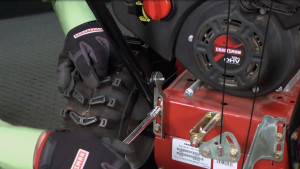

If your snowblower won't throw snow, it could be as simple as a clogged snowblower chute or a broken shear pin. But it also could be a damaged or broken auger belt or auger engagement cable. Instead of grabbing the shovel, check out our troubleshooting video and fix the snowblower yourself. Your back will thank you. Your pocketbook just might, too.
Check out our snowblower repair help page for more troubleshooting guidance and step-by-step repair instructions.
Tools and parts needed
Work gloves
Socket wrench
Auger belt
Auger engagement cable
Hi, this is Wayne from Sears PartsDirect. Today, we're going to talk about troubleshooting a snowblower that won't blow, throw or even toss your snow.
Make sure your snowblower is on a level surface and remove the key from the ignition to keep it from starting while your troubleshooting. The first thing we’re going to do is check the chute for obstructions. You've probably already done that, but you'd be surprised how many times people forget.
Check for clogs, broken shear pins
With the engine shut off, rotate the chute to where you can look down inside. If the chute's clogged, clear it out using the chute clean-out tool or a broom handle.
The next thing we’ll check is the shear pins. Shear pins intentionally break to help save the auger and drive system from major damage if the auger hits something solid and not made of snow, like a rock. You can usually find a spare right near the handle. Be sure to order some more so you’ll be ready the next time you need one. Remember, always use a manufacturer-approved shear pin or you could damage your snow blower. These are easy to replace, just locate the hole on the auger, line up the holes of the auger and the auger drive shaft, insert the shear pin then install the cotter pin and that's it.
Check for auger belt, engagement cable
The next thing we’ll look at is the auger belt. Use a socket wrench to remove the bolts and take a look under the cover. A worn or loose belt can slip and keep the auger from turning when you’re in snow, but it’ll turn just fine when you’re in the garage and there’s no snow weighing it down. If the belt is worn or broken, replace it. Here's a video that will show you how to do that.
The last thing we’ll check is the auger engagement cable. The auger engagement cable connects the control lever to the auger drive system. Take a look and make sure it’s not damaged or broken. If it is, it won’t engage the pulley into the auger belt to turn the auger blades. If your cable is broken, check out this video to learn how to replace it. If the cable's intact but loose, tighten the cable by loosening this bolt and adjust the bracket to eliminate excessive slack in the engagement cable. With the auger control lever disengaged, the cable should have very little slack. After adjusting the cable, test the snowblower to make sure that the auger engages and disengages properly.
Hey, thanks for watching. Be sure to check our other videos here on the Sears PartsDirect YouTube channel and don’t forget to subscribe.
Symptoms for gas snowblowers
Choose a symptom to see related snowblower repairs.
Main causes: punctured tire, damaged rim…
Main causes: dirty carburetor, stale fuel…
Main causes: dirty carburetor, clogged fuel filter, dirty spark plug, incorrect valve lash, leaky engine gaskets…
Main causes: stale gas, clogged carburetor, clogged or broken fuel line, dirty spark plug, bad rewind starter, incorrect…
Main causes: snow build-up in chute, chute drive mechanism failure, bad chute control assembly…
Main causes: loose drive clutch cable, damaged drive clutch cable, worn friction disc, scraper blade scraping the ground…
Main causes: clogged chute, damaged auger blades, broken shear pins, worn auger belt, damaged gear case, engine problems…
Main causes: broken shear pins, worn or loose auger drive belt, auger drive cable failure, damaged auger, bad gear case…
Things to do: replace the spark plug, change the oil, rebuild the carburetor, adjust valve lash, adjust or replace the b…
Repair guides for gas snowblowers
These step-by-step repair guides will help you safely fix what’s broken on your snowblower.

How to replace a snowblower fuel filter
Replace the fuel filter on your snowblower if it's clogged or damaged.…
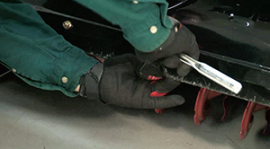
How to replace a snowblower shave plate
Follow the 7 easy steps in this repair guide/video to replace a worn out shave plate on your snowblower.…
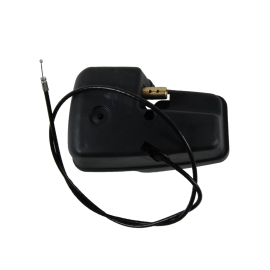
How to replace a snowblower chute control gearbox assembly
Replace the chute control gearbox on your snowblower if it's stripped or damaged.…
Articles and videos for gas snowblowers
Use the advice and tips in these articles and videos to get the most out of your snowblower.
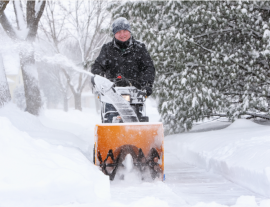
Learn the steps to take to adjust and maintain your snowblower so it lasts longer.…
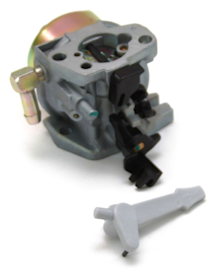
This chart will help you find the right carburetor for your Craftsman snowblower, tiller or log splitter.…
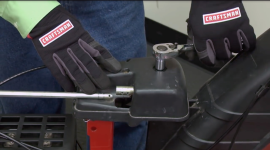
Learn how to replace the chute control assembly and gearbox if the chute on your snowblower won't turn.…